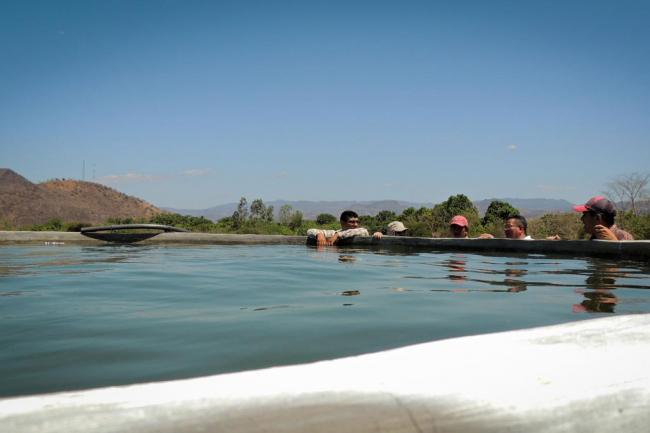
UN agencies to meet on El Niño’s ‘devastating impact’ in Central America’s Dry Corridor
In a news release, the Food and Agricultural Organization (FAO) said it will convene a high-level meeting in Rome on 30 June, along with the International Fund for Agricultural Development (IFAD) and the World Food Programme (WFP), “to focus on the urgent need for long-term action to address the impact of El Niño, including building resilience for food security and nutrition for the most vulnerable populations in the affected countries.”
“The aim of the high-level meeting is to increase awareness of, and the response to, this protracted and recurrent crisis, and to mobilize the international community to support the efforts of governments, UN agencies and other partners,” FAO added.
El Niño is the term used to describe the warming of the central to eastern tropical Pacific that occurs, on average, every three to seven years. It raises sea surface temperatures and impacts weather systems around the globe so that some places receive more rain while others receive none at all, often in a reversal of their usual weather pattern.
While El Niño, and its counterpart La Niña, occur cyclically, in recent years, mainly due to the effects of global climate change, extreme weather events associated with these phenomena – such as droughts and floods – have increased in frequency and severity, FAO noted.
In El Salvador, Guatemala and Honduras, the most affected countries, approximately 2.8 million people are dependent on food aid, according to the UN agency, which also flagged that that the situation is putting at risk the livelihoods of millions of small-scale family farmers in the Dry Corridor, many of whom are heavily dependent on subsistence agriculture.
The term Dry Corridor defines a group of ecosystems in the eco-region of dry tropical forests in Central America covering the lowlands of the Pacific coastal area, and most of central pre-mountain region of El Salvador, Guatemala, Honduras, Nicaragua, and parts of Costa Rica and Panama. Climate risks in the Dry Corridor are mainly represented by recurrent droughts, excessive rains and severe flooding affecting agricultural production, with greater intensity in degraded areas.
Photo: FAO/Honduras
Source: www.justearthnews.com
Support Our Journalism
We cannot do without you.. your contribution supports unbiased journalism
IBNS is not driven by any ism- not wokeism, not racism, not skewed secularism, not hyper right-wing or left liberal ideals, nor by any hardline religious beliefs or hyper nationalism. We want to serve you good old objective news, as they are. We do not judge or preach. We let people decide for themselves. We only try to present factual and well-sourced news.







